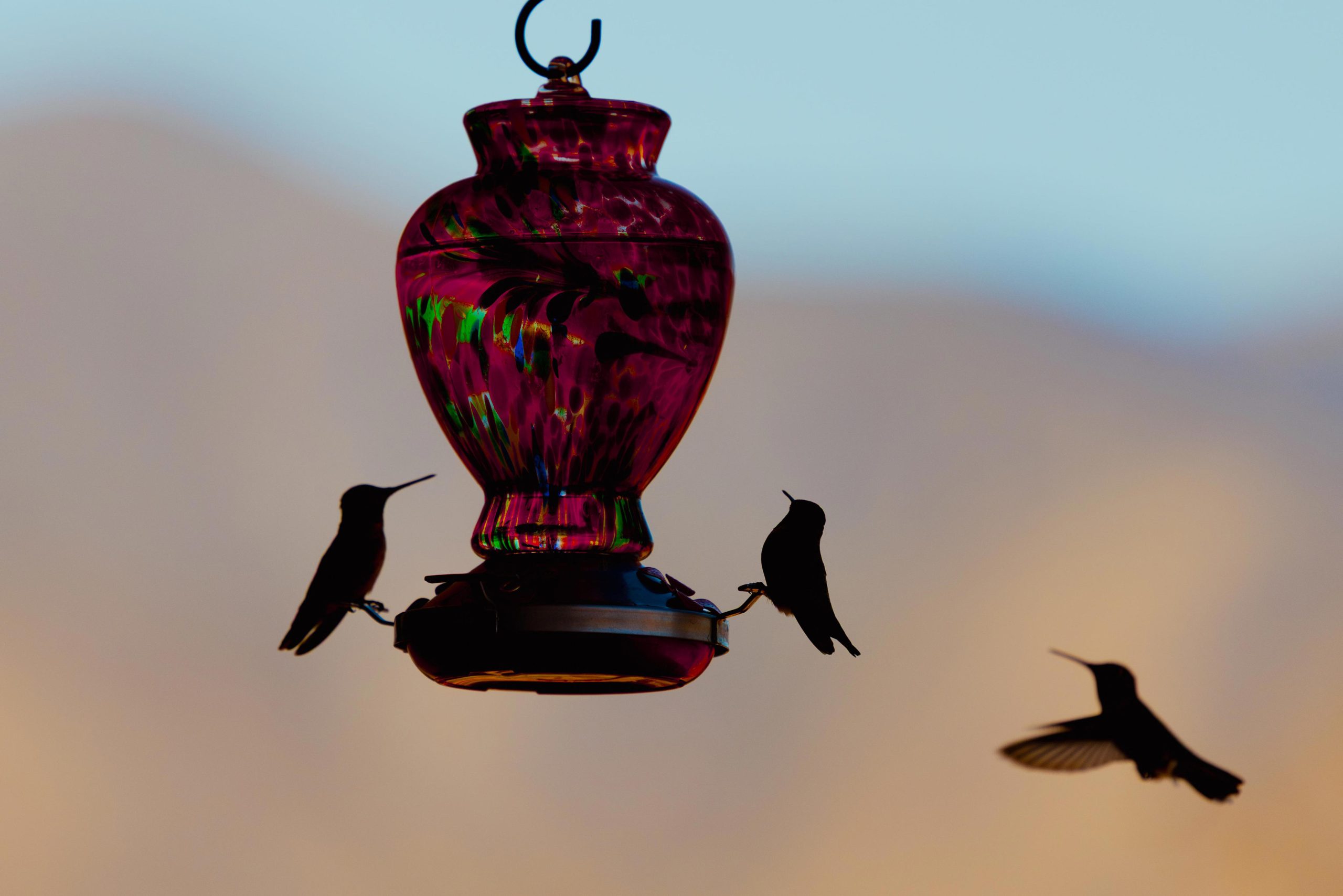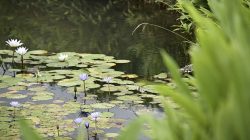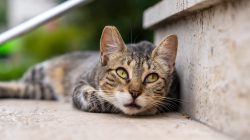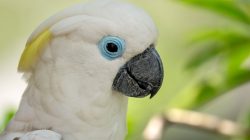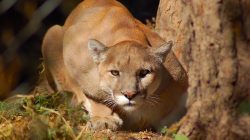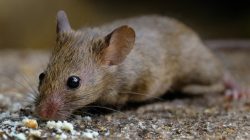Choosing the Best Location for Your Bird Feeder
Location, location, location — it’s not just a term for real estate agents. Where and how you set up your bird feeder can significantly affect the birds and other wildlife that visit. The main points to consider when picking the best spot for your bird feeder are proper coverage and proximity to trees, distance from windows, and height off the ground.
Coverage and Proximity to Trees
Birds prefer to feed in areas with some coverage, allowing them to quickly escape to nearby trees or bushes if needed. Placing your feeder near trees or shrubbery increases their protection from predators and offers shelter from inclement weather like rain or wind. However, they shouldn’t be too close. The standard guideline is to put your feeder between 10 and 15 feet from bushes and trees.
Hanging your feeder in a tree with easily accessible branches isn’t advised. “We also want to reduce the ability of other animals to access the food, which is why sometimes hanging them in trees can be an invitation to our smaller mammals. Placing it about 10 feet away from any tree or structure squirrels or raccoons could use to jump off will help stop them from stealing food,” said Tru Hubbard, urban wildlife education coordinator for the Nevada Department of Wildlife.
Proper placement can also reduce the likelihood of birds being stalked by neighborhood cats from the bushes. This is important to consider because feral and domestic cat predation is the primary driver of bird mortality in the US.
Distance from Windows
“There are multiple factors to consider that can vary for each person and yard. Prioritizing the bird’s safety should be number one; thus, avoiding spots that could increase the chance of bird strikes on windows should be at the top of the list,” said Hubbard.
There is a sweet spot regarding how far away your feeder should be from windows. One way to remember this is the Rule of 3 or 30, which suggests placing your bird feeder within 3 feet of a window or at least 30 feet away. If your feeder is less than three feet from a window, the chances of a bird getting injured are reduced since it won’t be flying at high speed if it hits the window.
The safest option is to position your feeder well away from windows to eliminate the risk of collisions entirely. “Ideally, a bird feeder should be placed more than 30 feet away from any windows, allowing plenty of time for them to navigate around potential hazards, or within a few feet of a home, which doesn’t allow birds to gain enough speed to injure themselves if they do contact a window,” explained Hubbard.
The US Fish and Wildlife Service estimates that over one billion birds collide with glass and windows in the United States annually. If birds are colliding with your windows at home, check out these tips for keeping them safe.
Shade versus Sun
“Hanging feeders in shaded areas is generally preferred because it will prevent food spoilage, provide some cover from the elements and keep birds out of the hot sun for a more comfortable feeding environment,” explained Hubbard.
In addition to keeping them cooler during the warmer summer months, a shaded location can help reduce sun glare and prevent confusion for the birds flying in your yard.
Height off the Ground
The height of your feeder will also impact the species of birds that will hang out there. Ground-feeding birds, such as sparrows and towhees, naturally prefer to eat lower, while others, like woodpeckers, feed higher in trees.
“About five to six feet minimum is recommended due to other animals that will be trying to access the feed, including squirrels, raccoons and deer,” said Hubbard.
You can certainly install a bird feeder above that five-to-six-foot sweet spot, just keep in mind that positioning it too high can make it less convenient for cleaning and refilling.
What Type of Bird Feeder Should You Use?
Bird feeders come in all shapes and sizes, ranging from trays and platforms to hoppers and tubes. Browsing the many options at my local plant nursery was a little overwhelming. I spoke with a knowledgeable employee who explained that when it comes to deciding on the type of feeder, it ultimately boils down to the bird you hope to attract.
Hubbard echoed this sentiment. “Your bird feeder selection depends primarily on the species of bird you would like to feed. For instance, platform feeders tend to be better suited for larger songbirds like cardinals, while feeders with lots of little perches are better for small songbirds and can reduce competition for food. Things you can also consider are durability, how easy they are to clean and squirrel-proof features if you expect this to be an issue,” Hubbard explained.
Unless you’re trying to attract one specific type of bird, providing a combination of different feeder styles and foods in your yard will attract the greatest variety.
What Should You Feed the Birds?
Similar to the type of feeder, the food you put out will determine which birds (and other animals) will visit. “The type of birdseed used varies depending on what species you’re hoping to attract to your backyard,” Hubbard said, sharing research published by the National Audubon Society. Project Wildbird was an impressive study involving the observation of 1.2 million bird feeder visits to determine the top seed preferences of birds.
The number-one choice? Black oil sunflower seeds. They’re easy to crack open and provide a nutritious, high-oil snack, meaning less work and a greater reward. It’s preferred by birds such as the black-capped chickadee, Cassin’s finch, northern cardinal, house finch, tufted titmouse, red-breasted nuthatch and many more.
High-quality birdseed will increase the likelihood of birds flocking to your feeder. Cheap store-bought mixed bags often include fillers such as cracked corn and red milo. These low-quality alternatives to sunflower and other protein-rich seeds lack nutritional value, and birds often won’t eat them. Smaller birds have a harder time eating these with their tiny beaks. An accumulation of leftovers can grow mold and attract unwanted wildlife or pests to your feeder, so it’s best to avoid the cheap stuff at all costs.
Mealworms and suet cakes are other great options for providing the birds with nutritious and energy-rich food.
Do Not Give Them Human Food
Avoid setting out human food or snacks to protect your wild bird visitors and their digestive health. Certain foods, including avocado, fruit seeds and pits, bread, milk, chocolate and foods high in sugar or salt, are toxic to birds.
“We do not recommend feeding any wild bird human food. An unnatural diet doesn’t provide the required nutrients that wild birds need to be healthy, and it can also result in behavioral changes, increases in illnesses and disease spread,” explains Hubbard.
Is It OK to Have a Bird Feeder in Your Yard?
Generally, having a bird feeder in your yard is fine, but it depends on your situation. While bird feeders attract various birds, they may also draw in other animals, such as mice, squirrels, raccoons, deer and bears. The presence of rodents near your bird feeder can attract predators like snakes, coyotes, hawks and owls to your space.
“Some instances where it may be a good idea to remove your feeder, at least for the time being, are when you’re made aware of high wildlife activity in your area, including animals such as bears or coyotes. These animals are attracted to almost any food source they can find, especially when they are easily accessible. Securing food sources can be an easy adjustment to help keep wildlife from developing a habit of visiting your yard,” said Hubbard.
“If you don’t want to remove the bird feeder completely, try removing it overnight when a lot of wildlife is most active, then place it back out in the morning. You can also try scattering some small amounts of birdseed in your yard during the day, which will be easy for birds to pick through but not worth it for our larger animals. Keep in mind that this may also attract smaller rodents to your yard, which could, in turn, attract predators. It is good practice to keep up with sightings in your area, and you can start by removing and securing the feeders at night,” Hubbard emphasized.
How Often Should You Clean Your Bird Feeder?
“Generally, it is recommended that bird feeders be cleaned every other week or twice a month, but this frequency should be increased if sick birds or disease is suspected. Another option is to clean the feeder every time it is emptied,” said Hubbard.
The frequency also depends on the type of feeder and food involved, as well as the climate. For example, hummingbird feeders require more frequent cleanings (around every three to five days), as do feeders located in especially hot or humid weather.
Most bird feeders can be cleaned by removing the old seed, taking them apart and placing them in a dishwasher on a hot setting or handwashing with soap or a diluted bleach solution. Properly rinse and thoroughly dry the bird feeder before refilling it with new seed. Cleaning the ground beneath your feeder is recommended to prevent the buildup of uneaten seed and bird waste.
How Long Will It Take for Birds to Find the Feeder?
I have two different types of feeders: a hanging tray and the Bird Buddy Smart Feeder. The latter has a classic hopper or house shape with a solar-powered roof for coverage and a camera for capturing photos and videos as they munch.
The first bird to visit my platform feeder took about three days. It took 12 days for a bird to land on the Bird Buddy feeder. I was jumping for joy when I received the notification from the Bird Buddy app that I had a visitor — a cute mountain chickadee coming to check things out for the first time.
Summary of Key Points
The most important thing to consider is the health and safety of the wild birds in your area. In addition to the placement of your bird feeder, the type of feeder and seed you use influence the species of birds that will visit — as well as the presence of other animals and potential predators.
Ideally, you should position your bird feeder around 10 feet away from trees or shrubs to prevent squirrels from jumping onto it. It’s best to keep your feeder at least 30 feet away from windows or glass to reduce the risk of collision, a leading cause of injury and death for birds.
Use high-quality feed and avoid offering human food or snacks, as many are toxic to birds. If you live in an area where bears, coyotes or foxes are frequently spotted, securing your bird feeder and any other attractants is crucial to keep these animals safe and out of your yard. Additionally, cats pose another huge threat to bird populations. If you have a cat that roams outside, it’s best not to use bird feeders in your yard to ensure the birds’ safety and protection.
Regular cleaning of your bird feeder is essential to prevent mold and bacteria growth, which can lead to the transmission of bird disease.
As fun as it is to bring all the birds to your yard, being a responsible birder is key to ensuring the birds (and you) stay safe, healthy and happy. If you have questions regarding your birding journey, the National Audubon Society is an excellent resource for bird feeding and care. Your state’s wildlife department is another fantastic source for inquiring about local guidelines and assistance.
The information contained in this article is for educational and informational purposes only and is not intended as health or medical advice. Always consult a physician or other qualified health provider regarding any questions you may have about a medical condition or health objectives.

